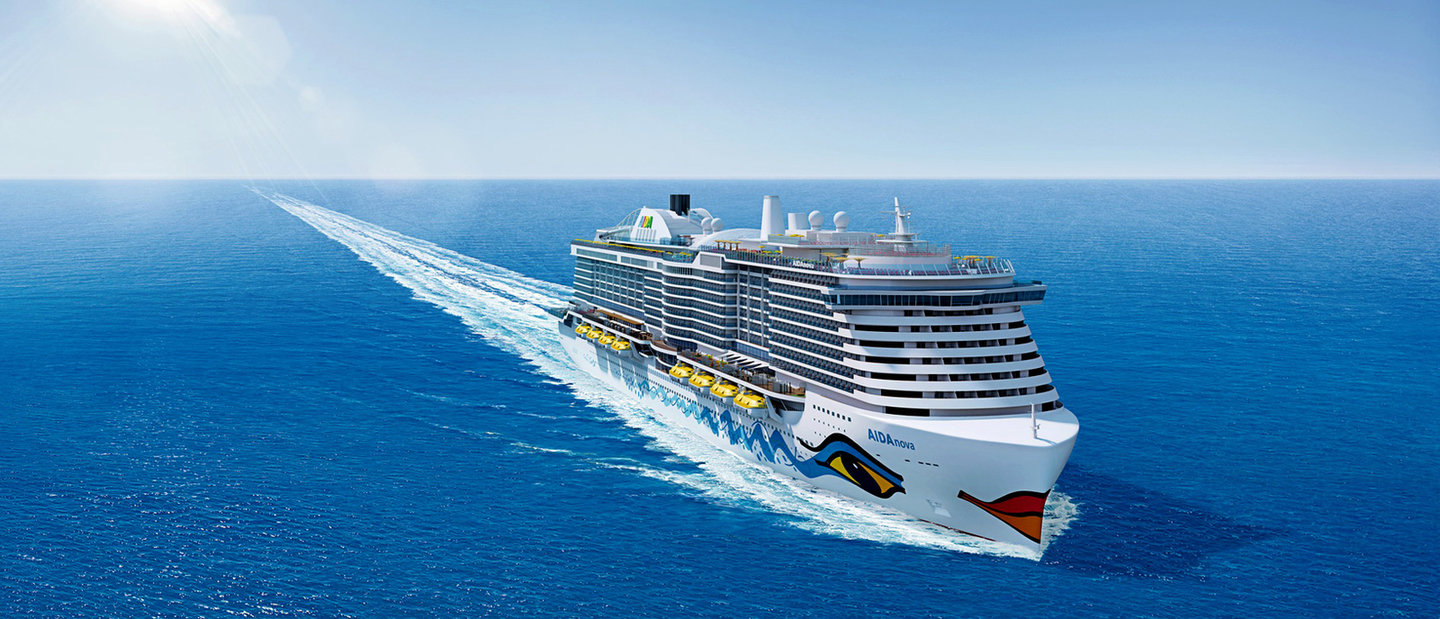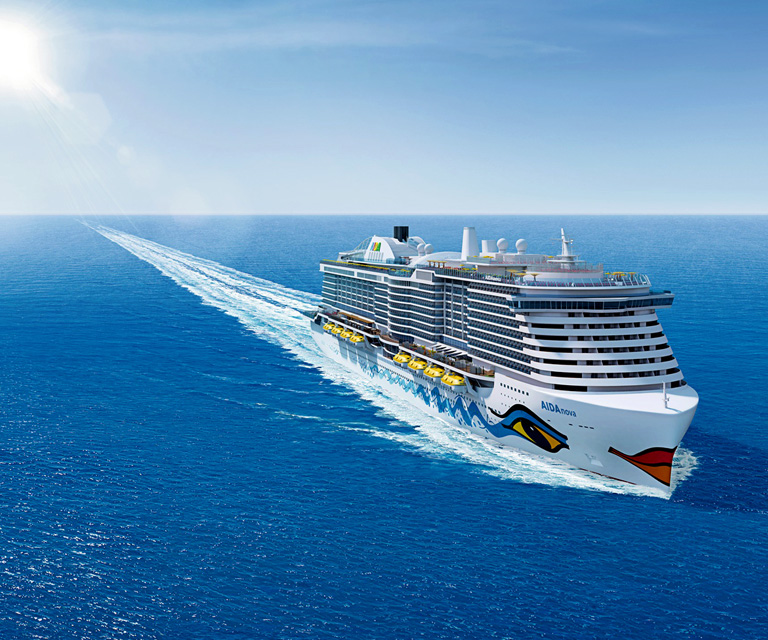Carnival’s LNG fleet: ushering in a new generation of cruise ships
Carnival Corporation is preparing to launch the first cruise ship completely powered by liquefied natural gas. Eva Grey finds out how the AIDAnova will set the tone for an entire fleet of seven vessels to set sail under the “green cruising” concept over the next five years.
hree years ago, German cruise line AIDA Cruises made international headlines when its pilot project successfully demonstrated that a cruise ship can be powered by liquefied natural gas (LNG).
LNG has been steadily growing as a source of energy worldwide since the first commercial liquefaction plant was delivered in 1964 in Arzew, Algeria. Particularly over the past three years, it has experienced dynamic growth, with global trade reaching 258 million tonnes (MT) in 2016 – the third record-breaking year in a row. At present, natural gas is recognised as the cleanest-burning hydrocarbon.
In the shipping sector, LNG is emerging as a low-cost, low-emissions alternative to conventional marine bunker fuels, and now it seems that its potential has finally reached the cruise industry, notoriously one of the worst offenders when it comes to fuel emissions.
Just one year after the initial pilot, AIDAprima became the first cruise ship to routinely use LNG with a dual-fuel powered engine while in port. This marked a drastic move for green operations at the time, since a cruise ship spends an average of 40% of its operating time in port. According to the company, the use of LNG can reduce the emission of nitrogen oxides by up to 80%, while particulate matter and sulphur oxides are almost entirely eliminated and carbon dioxide emissions are cut by 20%.
Now, Carnival Corporation (owner of AIDA Cruises and nine other major cruising brands) is taking this one step further, with the launch of seven fully LNG-powered ships scheduled to be delivered between now and 2022.
Samsung-designed smart bracelets connect to the MSC for Me system. Image courtesy of MSC Cruises
Uncompromising on design: matching environmentalism and luxury
The first in the series, AIDAnova, is arriving in late 2018, and once it sets sail, it will have the largest passenger capacity in the world. The ship is currently under construction at the Meyer Werft shipyard in Papenburg, Germany, and promises to “combine innovative design with state-of-the-art technology to provide even greater on-board comfort,” according to its developers.
A keel-laying ceremony took place in September last year to celebrate the start of AIDAnova’s construction. Carnival Corporation hopes the ship will become a symbol for its “aggressive sustainability goals”.
"The ships will use Shell's infrastructure in cruise ports to refuel with LNG."
Fuel for the first two vessels, which will routinely visit popular European ports, will be supplied by Shell, under a framework agreement signed between the two companies. As part of the agreement, the ships will use Shell's infrastructure in cruise ports to refuel with LNG throughout their itineraries.
However, its makers aren’t content with just the green credentials; passengers will be welcomed on a state-of-the-art vessel, which aims to provide a luxurious and at times extravagant experience in terms of amenities, entertainment and dining.
According to a company press release, the passengers will have a choice of 2,600 staterooms, including 31 suites, 312 interior cabins, 198 ocean-view cabins and 1,655 balcony cabins. The ship’s staterooms will be available in 21 different categories, including double or family cabins, single cabins, verandas and junior suites with a light-flooded winter garden, as well as premium or penthouse suites with an area of up to 53m².
Once out of their rooms, passengers will be able to visit the on-board brewery featuring a beer garden, the beach club complete with three water slides, a climbing garden and a mini golf course, among others. In a first for the brand, the ship will also have two private outdoor sun islands aimed at couples.
Indoor entertainment will include an escape room for puzzle lovers, a 360-degree theatre, as well as a TV studio at sea. Fitness fans will be able to take advantage of a modern gym, which will feature both indoor and outdoor areas.
These facilities will be topped by a whopping 17 restaurants and 23 bars that promise to offer a “variety of culinary trends from around the world”.
For its debut journey, AIDAnova plans to make a first stop in Hamburg, after which it will begin its usual seven-day trips around the Canary Islands, stopping in top destinations such as Gran Canaria, Tenerife, Lanzarote and Fuerteventura.
AIDAnova will be the first in the new series of fully LNG-powered ships from Carnival Corporation. Image courtesy of Meyer Werft


Carnival’s statement: will it prove persuasive for the industry?
This vessel is just the beginning: over the next five years, Carnival Corporation will introduce a fleet of seven clean energy ships, serving some of the world’s top tourist spots.
Costa Smeralda will follow AIDAnova as the second in the fleet, in 2019. Two more will arrive in 2020, for Carnival Cruise Line and P&O Cruises UK, after which Costa Cruises and AIDA Cruises will each receive an additional ship in 2021. The last one from this series will belong to Carnival Cruise Line, to be delivered in 2022.
“We are proud to be on the forefront of advancing LNG as a fuel source.”
The entire fleet is under construction by German and Finnish shipbuilders Meyer Werft and Meyer Turku.
“One of the keys to establishing LNG as a standard for powering cruise ships is building out an extensive, safe and reliable infrastructure across the globe for this clean burning fossil fuel,” said Tom Strang, senior vice president of maritime affairs for Carnival Corporation. “We are proud to be on the forefront of advancing LNG as a fuel source for the cruise industry.”
The long-term commitment from the world's largest leisure travel company to invest in a brand new generation of LNG-powered ships undoubtedly marks a huge leap away from the traditional bunker fuel – and could set a worthy precedent in the widespread adoption of this clean fuel.
When it comes to the shipping industry at large, the current order book analysed by LNG World Shipping reveals that the entire global LNG fleet will reach 600 vessels by summer 2019.